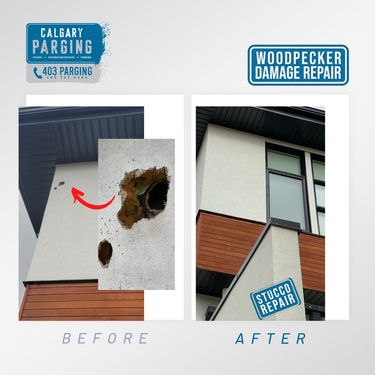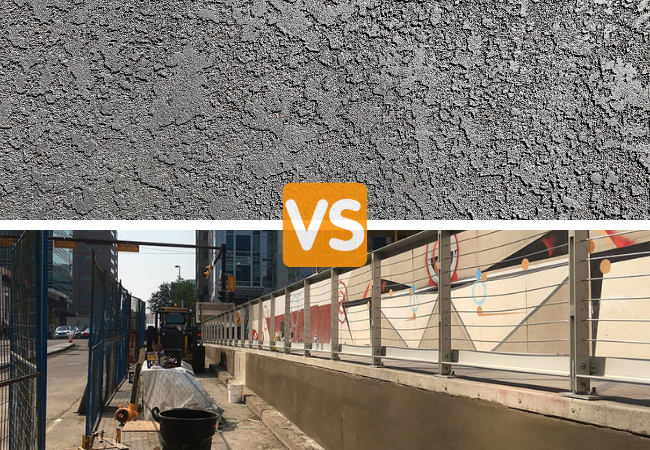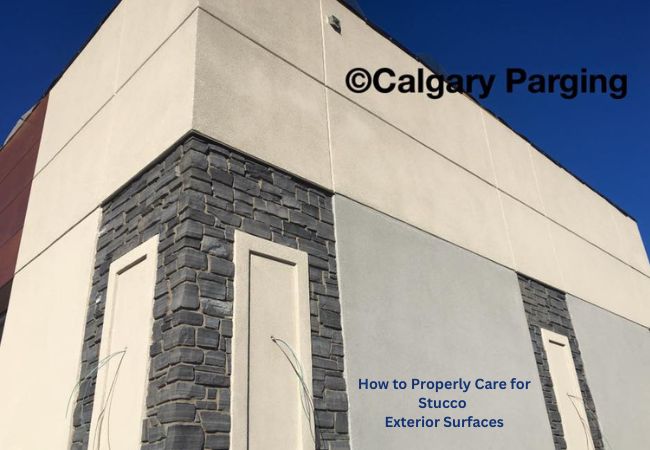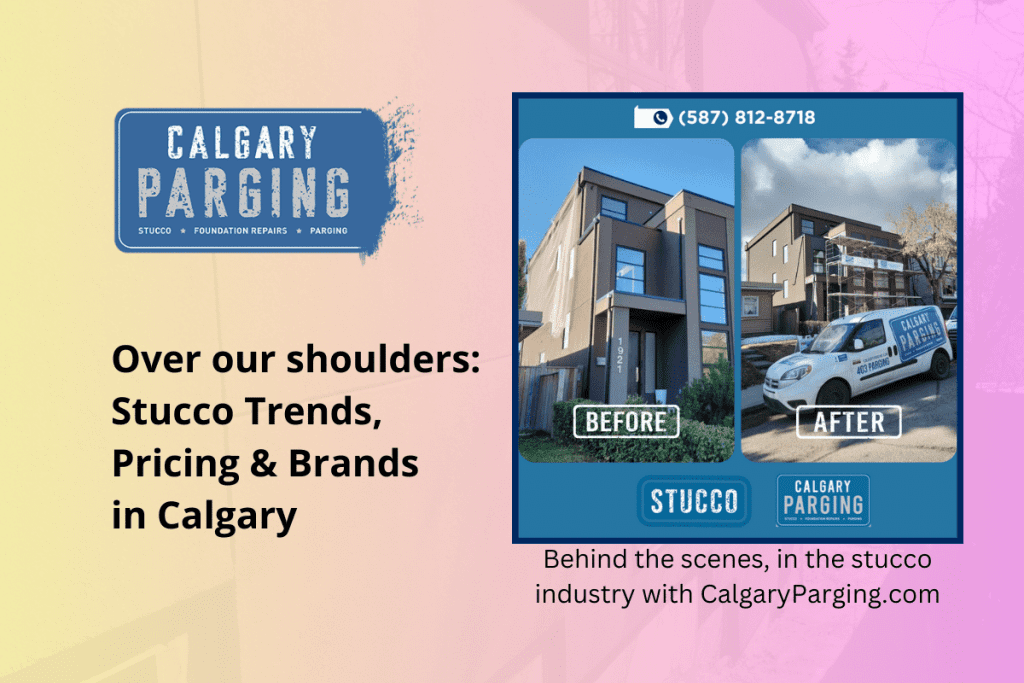Like many homeowners, you may want a clean, new look for your home. If that’s the case, consider modern stucco. Stucco is a building material that consists of Portland cement, sand, lime, water and aggregate most usually in the form of crushed stone as well as an additive package.
It is frequently used as both an interior and exterior wall finish and is also used as a building material with a more solid plaster base to create structures such as patios, boardwalks, garden porches and to protect concrete from water on outdoor surfaces such as driveways and walkways.
There is no denying that stucco is a versatile building material. Stucco can be used to create high-end exterior finishes, accentuate exterior spaces and even create beautiful interior spaces. But despite its popularity, some people might still question whether it’s actually worth the money.
While replaced by concrete in some parts of the world, stucco remains a highly popular choice for builders and homeowners. The combination of finishes, color, and texture present numerous possibilities for homeowners, business owners, and builders.
Recent years have seen the evolution of stucco, as new stucco materials have become available in the market. One of these is stucco acrylic which is meant to be a substitute for traditional stucco. This type of stucco is also known as synthetic stucco or EIFs. Traditional stucco and stucco acrylic are similar, but both kinds have their own features that you need to consider fore your home’s needs.
How do you decide which one is the best for your home?
Traditional Stucco Was The Original Version Of Stucco
Stucco is a form of plaster that has been used in building construction since the ancient Roman times. It is a mixture of cement, lime, and sand.
The term traditional stucco actually refers to the historical composition of Portland cement, and those who prefer traditional stucco are generally trying to achieve the look of the smooth surface finish that can be obtained with this type of plaster.
Traditional stucco provides an extremely tough surface that will resist deterioration from water damage while still providing a beautiful and durable exterior finish for your home.
Acrylic Stucco Is A Newer Type Of Stucco
Acrylic stucco is a newer type of stucco consisting of a sand and cement base that has acrylic and polymers added to it both during the mixing process, and after each coat is applied to the wall.
While both traditional and acrylic stucco have some advantages over other types of siding, such as vinyl or aluminum siding, there are also some distinct differences between the two types that you should be aware of before making your decision on which type would best suit your needs.
Stucco has been used as an interior decorative accent material since ancient Roman times. The most common place you will see this material being used is on exterior walls where it can be painted in many different colours or textured with various patterns to create unique designs on your house’s walls. The result is both stylish and durable enough to provide adequate protection against the natural elements.
Acrylic stuccos are made out from Portland cement mixed with latex additive then applied onto a wall as three separate layers. An undercoat layer (also known as scratch coat) is made up of mainly Portland cement plus some fine-grained aggregates (sand).
This layer is followed by a second layer (known as brown coat) made up primarily from lime plaster, and is followed finally by top layer composed again mainly from lime plaster, but containing pigments so that the area can be coloured to the homeowner’s liking.
Both Types Of Stucco Have Their Own Advantages And Disadvantages
Each type of stucco has its own set of pros and cons. Acrylic stucco is more expensive and needs to be applied by an expert because of how quickly it dries, but it is much more durable and resistant to damage than traditional stucco.
When acrylic stucco is properly applied, it can last for years without cracking or needing repair, though they’re prone to woodpecker damage. However, one of its main disadvantages is that it can be hard to source as not many suppliers carry it.
On the other hand, traditional acrylic is less expensive and easier to source compared to acrylic stucco. However, it also has its own installation challenges because it comes in as a dry-mix, and if it isn’t mixed properly, it can lead to colour inconsistencies.
If you’re concerned about price over durability of your stucco, you can look into applying an acrylic coating over your existing stucco wall or surface rather than having the entire wall removed and replaced with one type of stucco. This will allow you to enjoy the benefits of both materials at a fraction of the cost.
Cost And Durability Are Among The Main Differences Between Traditional And Acrylic Stuccos
When it comes to traditional and acrylic stucco, the cost and durability are the main differences between the two. While they share many similarities in strength, flexibility, and fire resistance, there are some notable variations to consider before making a final decision.
Acrylic coatings are more expensive than traditional stucco as a result of their distinct composition and process of application. Unlike stucco that is cement-based, acrylic stucco has to be applied in three layers with drying time in between each layer.
This process takes much longer than traditional application methods such as spraying or troweling. However, the additional cost is justified by its longevity: the acrylic finish can last up to 10 years longer than traditional stucco, which can crack or chip over time. This is because the nature of its material makes it more flexible and more capable of adapting to temperature fluctuations.
In comparison to acrylic coatings, traditional stucco is more durable due to its cement-based makeup. However, this characteristic also makes it quite prone to cracking, which means that it will need more regular maintenance to keep it in good condition.
Differences In Application, Performance, And Aesthetics
Other differences between the two types of stucco include application, performance, and aesthetics. Acrylic stucco is easier to apply, but is considered less durable than traditional stucco, making it more suitable for interior walls and ceilings.
Traditional stucco is more porous than acrylic, meaning it’s better at protecting your home against the elements by wicking moisture away from the wall. However, that same quality also makes it more susceptible to chipping and cracking over time.
Acrylic is also less likely to fade over time because its colour is mixed in with the stucco, which makes it ideal for homeowners who want their house to stay bright without having to paint every few years.
Lastly, there are aesthetic differences between traditional and acrylic stucco that you should think about when deciding which one will be best for your project. Traditional stucco provides a rougher texture with minimal maintenance required, and acrylic stucco provides a smooth texture but may require more routine maintenance (i.e., washing off dirt buildup). The finish of each type can also vary depending on how they’re applied (which will cost less or more money).
Overall, you should ask yourself what you need most out of an exterior wall application before deciding between traditional or acrylic products.
Acrylic stucco can cost you more than traditional stucco. It’s more flexible and lightweight, allowing it to be applied directly over sheathing paper or foam. Traditional stucco requires a layer of wire mesh and two or three coats of asphalt-based building paper to provide a suitable base, adding costs and time to the installation process.
The traditional stucco system consists of three layers: lath, scratch coat and brown coat.
A wire mesh, or lath, is fastened securely to the sheathing before stucco is applied. The lath layer is normally made up of galvanized wire mesh or even a chicken wire mesh. After the lath layer is added to the wall and secured, a scratch coat is applied over it as its base. This base layer will then be finished with a brown coat that is troweled to create a smooth surface ready for paint.
Compared to traditional stucco, stucco acrylic consists of the same components as traditional stucco with the addition of an acrylic polymer admixture in order to ensure flexibility in the plaster. This flexibility makes it more durable than traditional stucco when confronted with movement in the building’s structure. Acrylic does not require a lath because its flexibility allows for movement in buildings as they age.
While both systems can be used for either interior or exterior applications, stucco acrylic has distinct advantages over its counterpart when it comes to installation differences as well as maintenance requirements.
Stucco acrylic can be directly applied over wood surfaces without any fear of moisture penetration issues because of its flexibility characteristics.
Another benefit of acrylic stucco is its durability; it will not crack or break down like traditional stucco. Acrylic also offers better weather resistance than traditional stucco, making it ideal for areas with unpredictable climates.
The look of your finished product might vary slightly depending on which type you choose: Traditional stucco tend to give off more natural tones while stucco acrylics tend toward brighter colours that really pop.
This is because stucco acrylic is a cement-based product that uses paint instead of pigments in the mix. The addition of paint allows the stucco to come in an almost unlimited variety of colours. On the other hand, traditional stucco needs time to dry and cure before they can be painted, which results in a more subdued colour.
Wrapping Up
While there is a lot of discussion about traditional stucco versus stucco acrylic, there is no denying the fact that both types do have their fair share of benefits. While traditional stucco is perhaps the more traditional choice in home exteriors, stucco acrylic can be a better fit for houses with light-colored interiors, as well as garages and entryways.
What this proves is that it’s always best to choose the right product for your project. It’s better to consider maintenance and upkeep when making your selection rather than thinking only about the cost of the project.
Regardless of what you choose, it always helps to work with a stucco contractor to find the best combination of materials to get the best results for your home construction and renovation needs.
6x Award Winning Stucco Company
We give an alluring finish to each surface by using premium made in Canada masonry products. 300+ verified reviews with 5-star ratings.
* No credit card required




